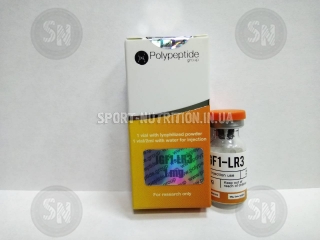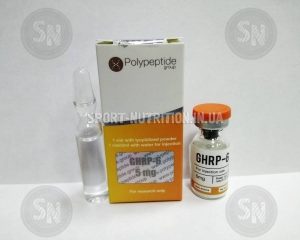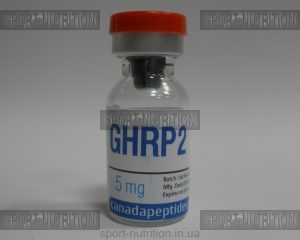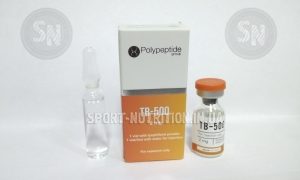Description
- Manufacturer: Polypeptide
- Release form: 1mg in vial
- Active ingredient: IGF1 LR3 is an analogue of human insulin-like growth factor with an attached link that increases the lifetime of the peptide in the body.
- Office: Sweden
- Production facilities: China
Polypeptide IGF1 LR3, insulin-like growth factor-1 (somatomedin C) is the main member of the family of insulin-like growth factors.
The zone of the human body in which Polypeptide IGF1 LR3 is created is the liver. There are prerequisites that say that Polypeptide IGF1 LR3 is produced for direct growth hormone in the muscles, and not, as previously stated, that it seems to be brought by the bloodstream from the liver.
Polypeptide IGF1 LR3 acts as an auto- and paracrine hormone, while its content in tissues changes without changing its concentration in the blood, and this change is modulated by binding proteins. Depending on the protein that binds Polypeptide IGF1 LR3, the activity of such a complex can change dramatically. Serum proteins that bind Polypeptide IGF1 LR3 are presented in 4 types: this is IGF1 LR3 binding protein type 1, type 2, type 3 and the alpha subunit, and later identified more protein binding Polypeptide IGF1 LR3, this proteins of the 4th and 6th types. According to the analyzes, 75% of Polypeptide IGF1 LR3 in the blood is associated in a complex with a type 3 protein (BSIFR-3), thus, it is the main protein factor limiting the action of IGF-1.
At low ph values, and this can be achieved by the accumulation of lactate (lactic acid) during failure repetition, accompanied by severe burning in the target muscles, IGF-1 and IGF-2 can dissociate from the bound state under these conditions, but only bypassing the stage of dissociation of the binding protein from the alpha subunit.
The protein that binds IGF1 LR3 is formed in the liver and protects from destruction, and also prolongs the life of IGF1 LR3 in circulation and in the regulation of their action, inhibits insulin-like actions and receptor binding of the peptide in the liver and fat cells.
Polypeptide IGF1 LR3 exhibits an anabolic effect on muscles and a healing effect on joints, ligaments, and liver.
Receptors and Polypeptide IGF1 LR3 (IGF)
The biological effects of Polypeptide IGF1 LR3 are realized through receptors that are located in the plasma membrane of target tissue cells; But the receptors of insulin itself, perhaps, will noticeably combine IGF, and the IGF receptors weakly combine insulin, so the insulin-like effect of IGF is mediated both to its own and to insulin receptors. In order to increase the availability of receptors, it is necessary to carry out the greatest blood loading of the target muscle area, acidic decay products will accumulate, lactate in particular, pH values decrease and activate the dissociation of IGF-1 complexes associated with proteins. Loads with the highest blood pumping produce a capillary network in this area, this contributes to an increase in receptors in contact with circulating free IGF-1 in the blood.
With regards to metabolic effects, it has been found that IGF stimulates cartilage growth, amino acid transport, DNA, RNA, chondroitin sulfate, collagen synthesis, and all these processes are stimulated in cartilage tissue. In muscles, IGF-1 stimulates the transport of amino acids and glucose, the formation of collagen, and protein synthesis. In fatty stimulation of sugar transport, oxidation of glucose to carbon dioxide, incorporation of glucose into lipids, suppression of lipolysis (similar to the action of insulin, i.e., they are realized through inhibition of the activity of the enzyme adenylate cyclase). The action of growth factors that stimulate growth is expressed 50-100 times more than that of insulin, but the sugar-lowering activity is only 1/13 relative to insulin.
Recommendations for use Polypeptide IGF1 LR3
It is advisable to dilute with 1-2 ml of solvent. Scheme: draw the solvent into the insulin syringe, remove the protective red cap from the Dinalan vial and inject the solvent into the vial (along the vial wall). Mix the resulting solution with gentle, smooth, circular motions, wait 30-40 seconds for complete dissolution, then gently stir again in circular motions and the solution is ready for use.
Dosage recommendations for Polypeptide IGF1 LR3
one daily dosage of 100mcg, it is recommended to divide into 4 injections equal in content (25mg per 1 injection). It is recommended to put it after the training, as it will be the most useful! In this case, you can put in a dosage of 50 mg. In order to get the maximum result, use Igf1-L3 daily, at a time when cortisol levels are elevated (after sleep. During experiences (nerves), at 12 o'clock.
To get the maximum possible effect, I recommend using it together with GHRP 2
IGF-1 is a drug that is targeted at a wide range of athletes. The use of IGF-1 is becoming known and relevant in athletics, swimming, weightlifting, ARM sports, as well as in team game and individual sports.





 |
|
Reviews
There are no reviews yet.